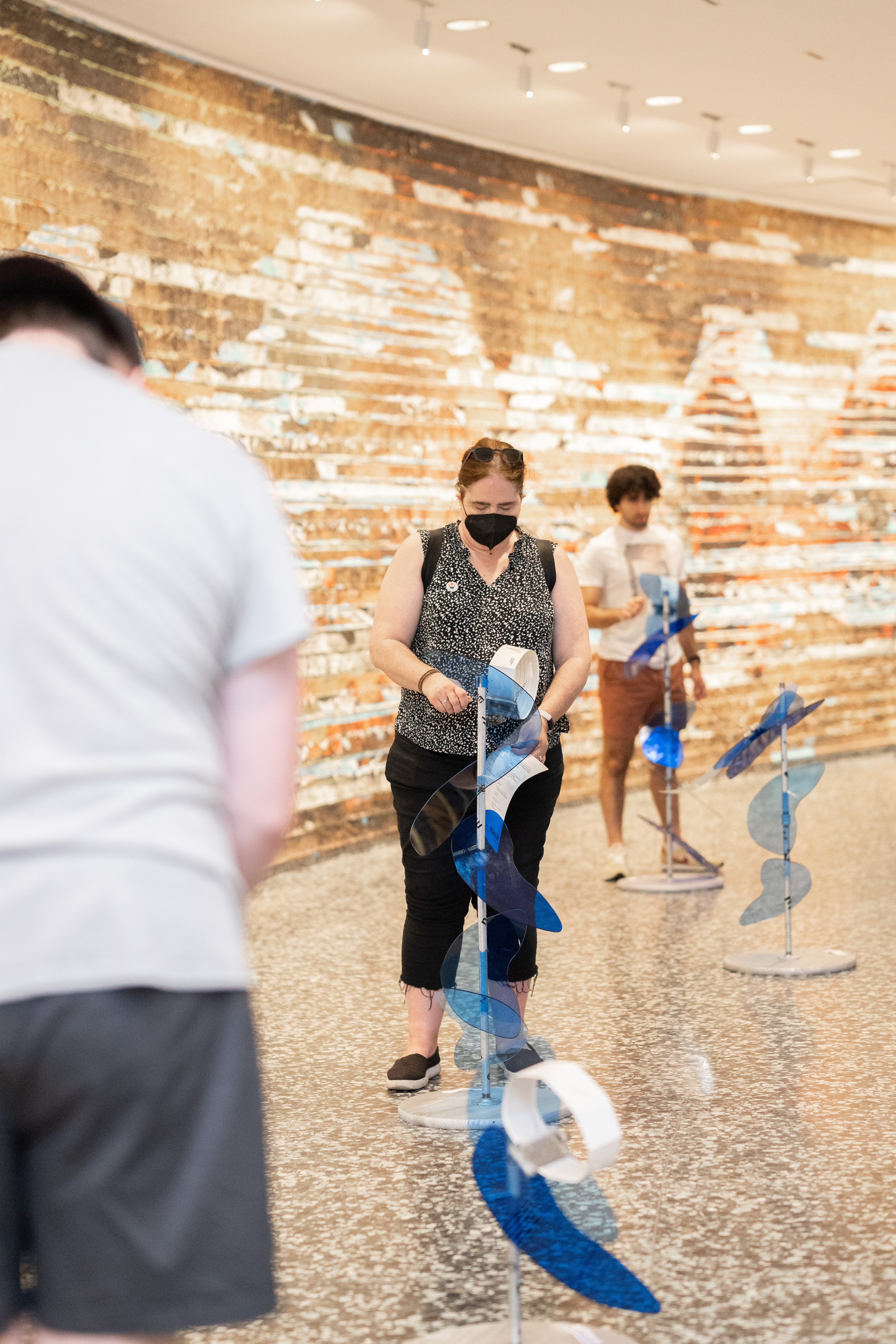When The Others Lick Underneath Your Tongue
First iteration: 13 phonetics letter-pressed on steel poles, (variable dimensions), 13 riddle texts printed on adhesive vinyl prints (variable dimensions), 13 music boxes (6.6” x 4.48” x 3.5”), 13 music box note sheets (25” x 2.7”), wood, acrylic tongues, synthetic fabric beanballs & audiences’ participation. 2020-2022. Second iteratation: aluminum stainless, riddle texts written in graphite, music boxes, music box note sheets & audiences’ participation. 2024.
Commissioned by the Korean Cultural Center in Washington D.C., Embassy of the Republic of Korea and Sound Scene, DC Listening Louge. Partially funded by the Smithsonian Hirshhorn Museum and Sculpture Garden, the Canada Council for the Arts, Ontario Arts Council & Toronto Arts Council
Exhibition:
When non-native speakers of the globally dominant languages such as English, French, or Spanish encounter moments that require them to be fluent in those languages, they tend to mumble. Not only are they not yet accustomed to the languages, but they also immediately anticipate that their utterance, pronunciation, and intonation, would be considered “wrong”. They worry if the factors in their speech would cause their listeners’ difficulties in understanding them. This anticipation accumulated over with their lived experiences would lower their confidence when speaking the languages and even sometimes result in anxiety or frustration. These “supposedly wrong” utterances are frequently described as speech failures and/or mistakes that require constant corrections in order for the speakers to culturally and linguistically integrate into the society of the globalizing languages; these imperial languages have entailed the pressure to master them thus haunted non-native speakers’ lives of migration and assimilation into westernized countries, which is a remnant of post-colonization in languages and, hence, cultures. This aspect has marginalized both non-dominant languages all over the world and everyday lives of residents in the countries because the national and domestic economic growth and cultural longevity have become more dependent on the capability of multilingualism. Meanwhile, this work stands against linguistic ableism by imagining the marginalized tongues as aphasic tongues in the sense of the word used by Rey Chow -- “This loss of voice [...] is a distinct form of [...] ‘limit experience,’ in which one reaches the end of certitude and touches the edge of the abyss. [...] How might aphasia (as the limit of having a voice or being able to speak) be understood simultaneously in relation to racialization.” (91 Chow) In light of these contemplations, this work attempts to unfold a harmonizing time and space for the audience to communicate thoroughly without concerns about imperfect and/or perfect usages of languages. In this realm arisen by this piece, there is only polyphony that is ironically yet beautifully created from the discordant sounds of the music box notes. The activation of the sounds come from voluntary physical communications of the audience by playing the instruments. Moreover, this work strives to germinate a feeling of solace for both the group of the non-native and the native, who too would like to eliminate the barriers that exist between them and the others. By suggesting that “unsuccessful” utterances can be another form of language, the aphasic tongues become the potency to transform into an alternative platform for the future of language and for imaginative means of mutual communications, in the same sense that Rey Chow describes aphasia as something that can be “conceptualized anew as forms of the unveiling, as what exposes the untenability of ‘proper’ speech as such”. (331 Chow) That being so, each participation taken place within this installation work engenders the possibility of decolonizing the hierarchy between languages.
Chow, Rey. Not like a Native Speaker: On Languaging as a Postcolonial Experience. Columbia University Press, 2014.









Photo by Cuctus Studio at Sound Scene 2022.






Photo by ijo and ivetta at Sound Scene 2022.

